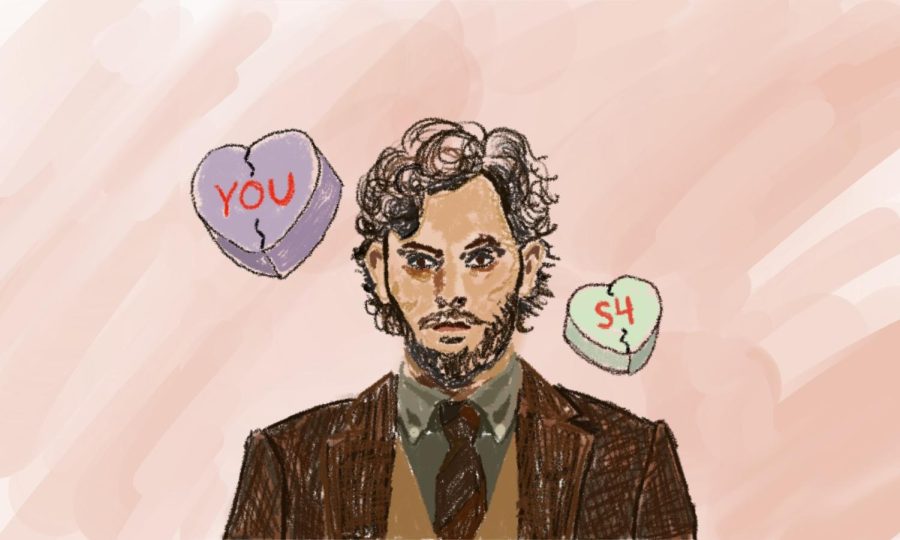Reel Thoughts: “You” Season Four trades romance for mystery
Joe Goldberg takes on a new persona in season four part one of Netflix’s “You.”
February 12, 2023
This piece contains mild spoilers.
Romantic comedies are obsessed with the idea that chasing after someone is the epitome of love. From “Sleepless in Seattle” to “How to Lose a Guy in 10 Days,” the idea is simple: No matter what has gone catastrophically wrong, just one grand gesture can solve everything quicker than the credits can roll.
Joe Goldberg (Penn Badgley), the protagonist of the Netflix original series “You,” sees himself as the leading man in such a film. Following last season’s murder of ex-wife Love Quinn (Victoria Pedretti), Joe flees across the pond searching desperately for Marienne (Tati Gabrielle), the complicated librarian he became infatuated with while living in Madre Linda.
When he finally finds her at a Paris art gallery, Joe expects a warm, climactic embrace. However, when the music swells and the tension builds, Marianne runs away in horror, bringing heartbroken Joe back to square one.
Season four’s first part makes one thing explicitly clear. This is not a love story.
As newly-christened English professor Jonathan Moore, Joe tries to begin a new life. He ironically assigns “The Tell-Tale Heart” to his students, galavants around lush cafes and begins to rendezvous with some of London’s social elite. After one drunken night, though, he finds his neighbor, Malcolm (Stephen Hagan), dead in his flat. At first, we assume that this is simply yet another one of Joe’s impulsive kills. But after he begins receiving anonymous messages from someone claiming to know his true identity, it becomes clear that he is being framed.
As Joe attempts to identify the killer, aptly dubbed the “Eat-the-Rich Killer,” he becomes intertwined in the messy, degenerate and cold-hearted environment of his new peers. He amasses a constantly-changing list of suspects, doubting himself with every turn.
In a refreshing break from the series’ usual structure, we now see Joe channeling his obsessive nature toward solving the murder mystery. If the first three seasons of “You” were romantic thrillers, season four is a whodunnit with elements of class commentary sprinkled throughout.
“You” is at its best when it leans into its own absurdity. While occasionally predictable, season four part one still manages to take the viewer on a whirlwind ride in just five episodes.
Nadia (Amy-Leigh Hickman), one of Joe’s precocious young students, nails the essence of the season in an off-handed remark about the mystery genre.
“It is a formula, but the formula is fun,” she tells him. “It draws you in, it hides a social commentary.”
Badgley’s performance as Joe stands out as one of the most memorable in recent television. His snarky internal monologue and wide range of emotions give an otherwise unsympathetic villain a sense of complexity.
One of the show’s strengths has always been its ensemble cast. Season four’s new additions truly shine as the stark foils to Joe’s reserved, pseudo-intellectual persona. Clueless nepotism baby Adam (Lukas Gage) and posh heiress Lady Phoebe (Tilly Keeper) stand out as much-needed comic relief among the darkness of the story, and Rhys Montrose (Ed Speleers) is the perfect addition as the outsider-politician who we eventually realize is Joe’s blackmailer.
While it’s not entirely clear whether or not Joe has finally changed for the better, “You” presents a gripping insight into the pitfalls of obsession and an anti-hero’s attempt to save himself from his own demise.
“You” season four part two will be released March 9 on Netflix.
Email: [email protected]
Twitter: @jrbenkendorf
Related Stories:
—Reel Thoughts: ‘The Fabelmans’ is a success as both introspective autobiography and family drama


